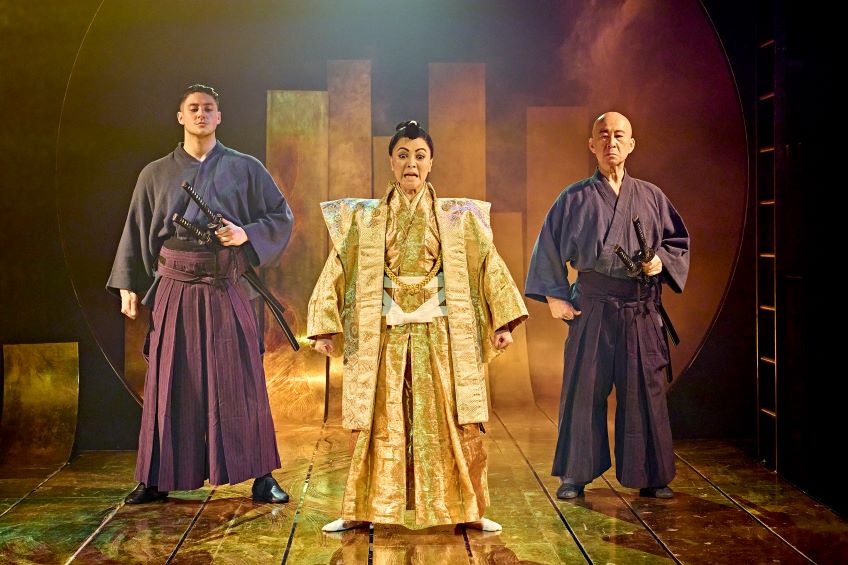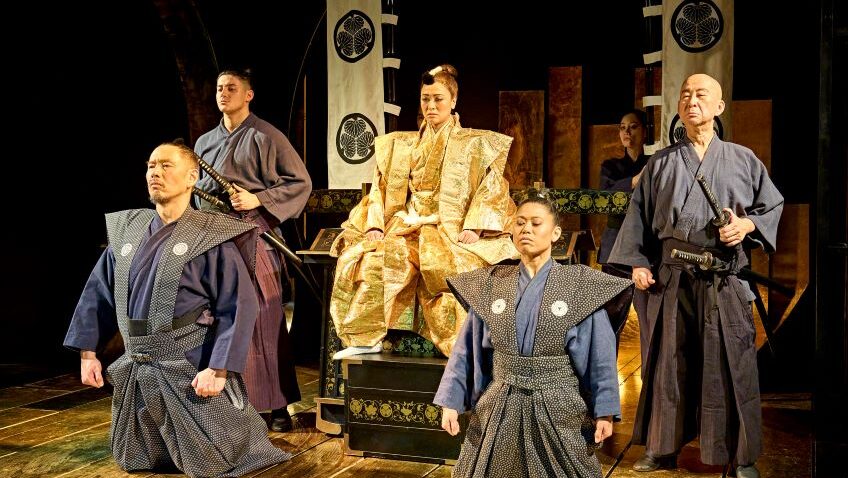PACIFIC OVERTURES, described by Stephen Sondheim as “the most bizarre and unusual musical ever to be seen in a commercial setting” was not the first Broadway musical to deal with a clash between Eastern and Western cultures. South Pacific, The King and I and Flower Drum Song had already been down that road in a big way.
The musical opened in New York in 1976 to a generally poor press, most critics dismissing it as boring, and it closed after 193 performances, having lost its entire investment. When it was staged in London by English National Opera in 1987 it played to houses that were only 30% full.
Pacific Overtures is the most political and among the least accessible and the least performed of Sondheim’s musicals. It draws on Kabuki, Bunraku and Noh theatrical traditions and has always been too esoteric for most audiences.
The present revival is a partnership between The Menier Chocolate Factory and the Umeda Arts Theatre in Japan where it was staged in Tokyo and Osaka and sung in Japanese. From 1638 to 1853, Japan, a feudal society, remained isolated from the outside world. The story deals with America’s determination to open up Japan to foreign trade. Modern Japan began with the gunboat diplomacy of Commodore Matthew Perry’s expedition. The action is dramatised from the Japanese point of view and the book, written by John Weidman, is a series of scenes rather than a continuous narrative.

What should the Japanese do? Expel or accommodate the barbarians? The music becomes increasingly westernised as the British, the Dutch, the Russians and the French jump on the American bandwagon.
The comic high spot is the song “Please Hello”, which is swaggeringly performed by five admirals, who are caricatures of their nations. They wear gunboats (made of cardboard) round their waists and are given witty pastiches of Sousa, Gilbert and Sullivan, Tchaikovsky and Offenbach to sing.
On the basis, that less is more, a favourite Sondheim maxim, Weidman has adjusted the text and there is now more focus on the friendship of a samurai (Takuro Ohno) and a fisherman (Joaquin Pedro Valdies) and their political fall-out. The Shogun (Sadri Oda) relies on them both to foil the aggressors.
Matthew White’s production, designed by Paul Farnsworth, choreographed by Ashley Nottingham, is exquisitely Japanese and small scale in its beauty and spectacle. Sung on a traverse stage, the emphasis, however, seems to be on sound rather than diction; and the lyrics, already difficult, are made even more difficult to hear and follow.
To learn more about Robert Tanitch and his reviews, click here to go to his website. 




